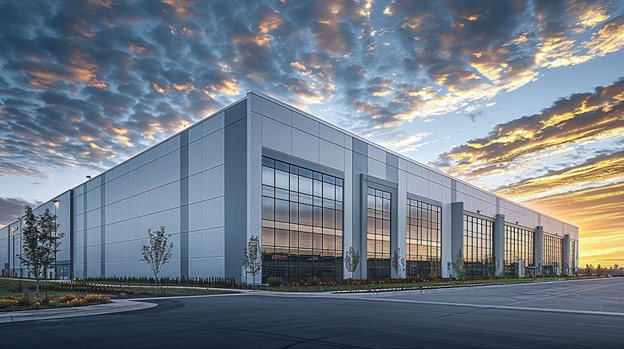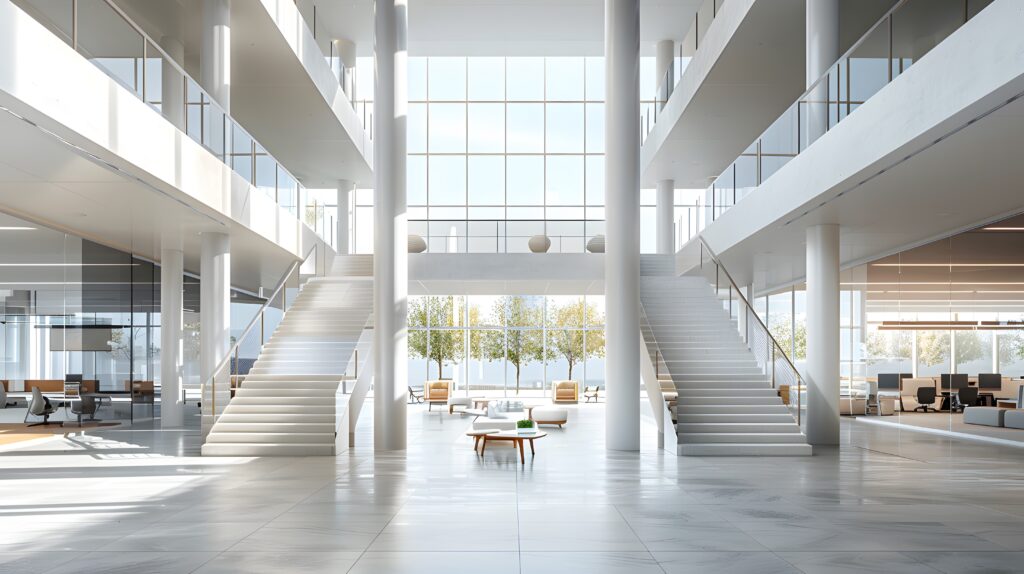
According to the EPA, commercial buildings account for nearly 20% of U.S. energy consumption, making them prime targets for cost savings and sustainability initiatives alike. With utilities among the highest operating expenses — and in light of tightening environmental regulations — never has ongoing maintenance been so critical for commercial buildings.
Our comprehensive guide for inspecting, repairing, and enhancing the most essential systems will keep your commercial properties humming at peak condition while cutting costs and decreasing environmental impact.
What Is Commercial Building Maintenance?
Before diving into this maintenance checklist, let’s clearly define what commercial building maintenance entails.
What is maintenance for a commercial building?
Commercial building maintenance refers to the regular, ongoing tasks required to keep all systems and equipment in a commercial facility functioning optimally. This includes preventive maintenance measures to avoid issues, as well as reactive maintenance repairs when problems arise.
What does building maintenance consist of?
Typical maintenance activities include inspecting, servicing, repairing, or replacing building elements and equipment such as heating ventilation and air conditioning (HVAC) systems, plumbing, electrical systems, waste management, interior finishes, and exterior areas. Testing emergency and safety systems is also a vital maintenance task.
What is required for building maintenance?
Successfully maintaining commercial buildings requires creating a comprehensive maintenance strategy, securing a budget, tracking building system data, utilizing qualified technicians, establishing preventive maintenance schedules, and ensuring adherence to compliance standards.
What is the maintenance plan of a building?
An effective maintenance plan details the scope of work, standards, documentation, timelines, materials, and processes required to properly maintain all building systems to deliver optimal uptime, efficiency, safety, and longevity.
A robust preventive maintenance program that’s supported by skilled technicians creates the foundation for an overall maintenance plan and strategy. For best practices on preventive maintenance, check out our guide to preventive maintenance checklists.
Commercial Building Maintenance Checklist: 9 Essential Steps
Keeping a commercial building running at peak efficiency requires regular inspections, testing, repairs, and documentation across all major building systems and equipment.
Below you’ll find key items for facilities teams to include on both seasonal and annual maintenance checklists. You can tailor items as needed for your building type, equipment, locale, and goals.
1. Exterior Maintenance
The exterior areas of a commercial facility include anything on the outside of the building envelope. Keeping the exterior properly maintained promotes safety, security, sustainability, and curb appeal.
Exterior maintenance checklist items include:
- Landscaping and groundskeeping : Pruning, fertilizing, pest control, irrigation , and trash removal
- Regular cleaning of exterior walls, windows, and lighting fixtures
- Parking lot inspection: Addressing cracks, pavement condition, and striping
- Signage cleaning and lighting checks
- Seasonal maintenance: Snow removal, gutter cleaning, etc.
2. HVAC Systems
HVAC systems maintain safe and comfortable indoor air temperature and quality. Improperly functioning HVAC leads to higher operating costs and compromised air quality.
HVAC maintenance checklist tasks include:
- Replacing air filters
- Clearing debris from outdoor condensers
- Checking refrigerant levels
- Testing emergency heat functions
- Verifying proper thermostat control
- Checking for leaks
- Cleaning air ducts
- Documenting energy efficiency
3. Plumbing
Safe and reliable plumbing systems supply potable water while properly draining waste water. Consistent plumbing maintenance prevents leaks, flooding, mold, and contamination.
Critical plumbing maintenance activities include:
- Inspecting pipes, joints, and valves for corrosion and leaks
- Testing water quality and backflow prevention
- Checking water heaters and boilers
- Clearing drain pipes and grease traps
- Documenting water usage
- Verifying adequate water pressure
4. Electrical Systems
Smooth electrical operations power all equipment while providing essential lighting and simultaneously supporting fire protection systems. This is critical, as faulty electrical systems pose major safety and operational risks.
Electrical maintenance checklist items may include:
- Infrared scans to identify hot spots
- Testing backup power generators
- Visually inspecting panels, breakers, and fuses for damage
- Using a multimeter to check wiring and connections
- Verifying proper functioning of outdoor lighting
- Tracking energy usage data to identify efficiency opportunities
5. Safety and Security
While often overlooked, safety and security systems protect assets and lives while helping to lower insurance costs. Preventive maintenance ensures these systems are prepared to respond swiftly in the event of an emergency.
Typical maintenance tasks in this area include:
- Examining fire alarms and suppression equipment
- Visually inspecting fire extinguishers
- Verifying that security alarms and surveillance systems function correctly
- Checking safety railings, shields, and guards
- Testing emergency lighting, exit signs, and evacuation routes
6. Other Interior Maintenance
The accessible interior spaces of a commercial facility greatly impact occupant safety, comfort, and satisfaction. Consistent cleaning and upkeep of finishes also helps assets last longer.
Interior maintenance activities include:
- General cleaning of floors, walls, and surfaces
- Touch-up painting, drywall repairs, and light bulb replacement
- Checking for leaks underneath sinks and equipment
- Documenting conditions with photos
- Annual deep cleaning of carpets, vents, and windows
7. Waste Management
Well-designed waste collection supports sustainability goals while keeping interior and exterior areas clean. Improper waste management poses safety, health, and environmental risks.
Critical waste management maintenance tasks include:
- Inspecting bins, compactors, and balers
- Testing compaction and baling functionality
- Documenting collected volumes and pick-up schedules
- Maintaining external dumpster areas for cleanliness and drainage
- Arranging recycling services and pick-up
8. Compliance and Documentation
For safety, liability, and operational continuity, commercial properties must adhere to regulations like building codes and environmental laws. Meticulous documentation is key for avoiding violations and penalties.
Key compliance maintenance activities include:
- Testing water systems per EPA regulations
- Maintaining inspection reports, system manuals, and equipment warranties
- Documenting equipment service and repairs
- Keeping training certificates current
- Tracking assets and lifecycles
9. Seasonal Maintenance
In addition to annual tasks, commercial maintenance checklists evolve with the seasons. Because of this, you should prepare for weather variability along with your building’s established shifts in occupancy and activities.
Seasonal maintenance may include:
- Transitioning HVAC between heating and cooling
- Pruning landscaping and removing snow
- Preparing outdoor amenities like patios
- Deep cleaning carpet and window treatments
- Testing backup power before storms
- Planning for increased holiday foot traffic
For more detailed recommendations, check out our seasonal checklists below:
- Commercial Food Equipment Pre-Holiday Season Checklist
- Summer Facilities Management Checklist
- Winter Checklist for Facilities Managers
- Hurricane Preparedness Checklist for Facilities Managers
Maintain Peak Performance with Proactive Planning
Keeping a commercial property running optimally year after year requires a proactive and disciplined approach across interconnected systems. And with an increasing focus on energy efficiency, sustainability, and contingency preparedness, the role of commercial facilities management continues to expand and grow ever more vigilant.
By establishing comprehensive maintenance checklists and protocols tied to lifecycle planning and documentation, commercial owners and operators can enhance safety, compliance, and operational resilience for the short and long term while keeping costs down.
With over 40 years of experience upgrading portfolios globally across our City brands, City Consulting Services (CCS) develops strategic asset, workforce, and other FM plans that bridge the gap between existing constraints and future productivity targets. Learn more about City Consulting Services.




 2016: City US is established in North America, in partnership with Southeastern Grocers (SEG), servicing over 750 supermarkets across 7 southern states.
2016: City US is established in North America, in partnership with Southeastern Grocers (SEG), servicing over 750 supermarkets across 7 southern states. 1985: Willie and Susan Haughey establish City Refrigeration Holdings (UK) Ltd in Glasgow, UK.
1985: Willie and Susan Haughey establish City Refrigeration Holdings (UK) Ltd in Glasgow, UK. 2009: City Australia launches in Melbourne, in partnership with Coles, servicing over 700 supermarkets across the country.
2009: City Australia launches in Melbourne, in partnership with Coles, servicing over 700 supermarkets across the country. 2015: City Asia launches in Kuala Lumpur, Malaysia, in partnership with Dairy Farm, servicing over 205 supermarkets across the region.
2015: City Asia launches in Kuala Lumpur, Malaysia, in partnership with Dairy Farm, servicing over 205 supermarkets across the region.